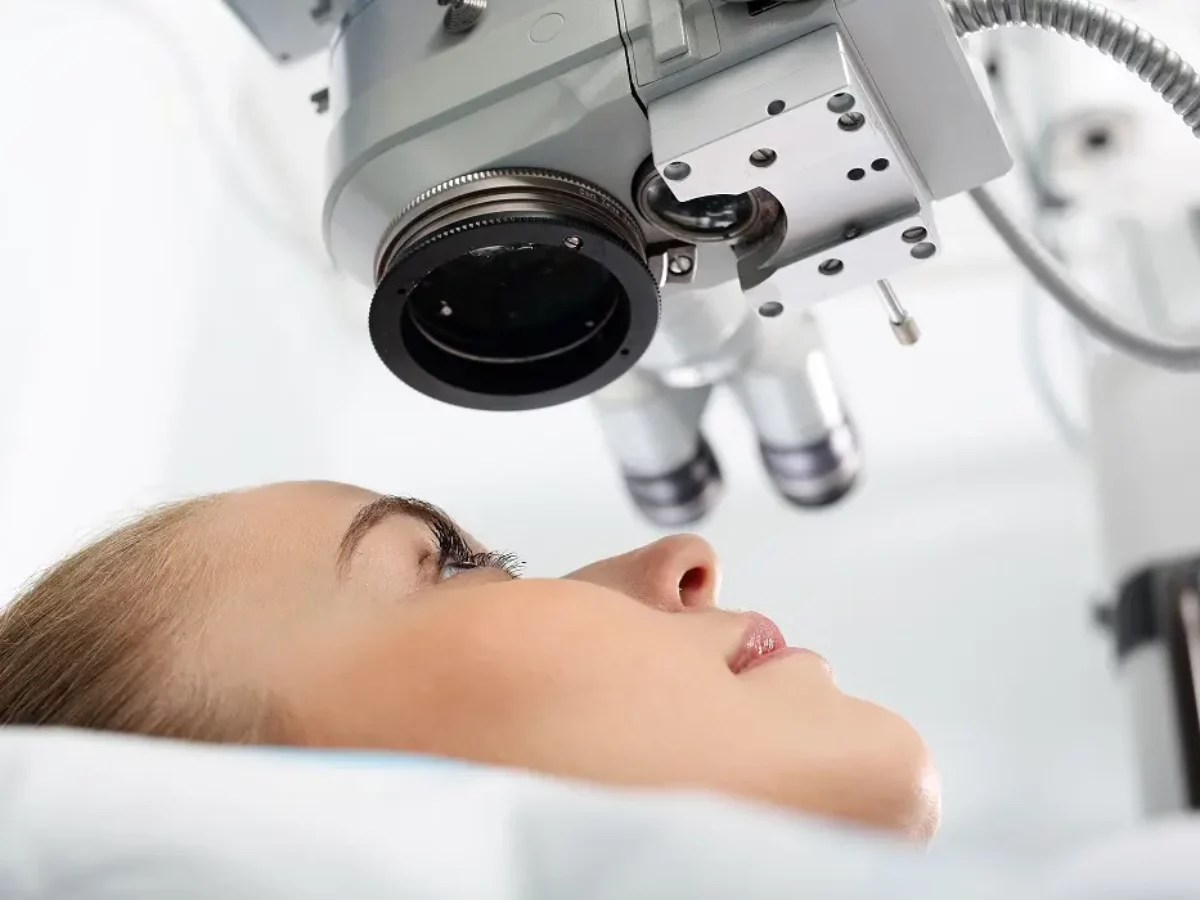Advances in eye surgery are continuing to be made with growing advances that offer safer, more precise, less invasive technologies and options for many who suffer from vision problems. Advances in 2024 go as far as revolutionary: improving outcomes and simplifying surgeries once thought complex. Here’s a review of the latest eye surgery technology 2024 that will revise the current listing on innovations reshaping the field of ophthalmology. From the “no-blade” cataract surgery to LASIK vision correction and corneal transplantation, this is a new journey of how such innovations are changing many lives.
Latest eye surgery technology
1. Femtosecond Laser-Assisted Cataract Surgery (FLACS)
Another major revolution in cataract surgery has been the introduction of FLACS. This method replaces the ‘age-old’ convention of making an incision with a surgical scalpel. Instead, an incision is made by a femtosecond laser with the results making the entire procedure ‘scalpel free.’ The laser is so accurate that it undoubtedly minimizes risks due to human error reduces trauma to the eye and enables faster times to recover.
Benefits of FLACS include:
- More precision at the time of incision
- Better results in the patient
- Healing is much faster
- A smaller number of complications occur within the procedure itself.
2. Custom Wavefront LASIK Technology
Custom Wavefront LASIK can:
- Provide better accuracy of vision than standard 20/20 vision.
- Less chance of complications like glare and halos.
- Treatment for higher-order aberration which standard LASIK might miss out on.
3. SMILE: Small incision lenticule extraction
SMILE is yet another advancement in refractive surgery that stands for Small Incision Lenticule Extraction. This is the least invasive form of surgery, preferred by patients who have more higher degrees of myopia or astigmatism. The femtosecond laser in Smile tears a thin lens-shaped piece of tissue within the cornea, which is subsequently extracted through a small incision. Smilee keeps more of the normal anatomy intact than traditional LASIK and at greater likelihood of protection from dry eye.
Benefits of SMILE:
- Causes minimal effect on the stability of the cornea
- Surgically opens up a lower risk of having dry eye.
- Has fast recovery times
4. Advanced Corneal Transplants by DMEK and DALK
By 2024, the technology in performing corneal transplants has reached its peak sophistication with DMEK (Descemet’s Membrane Endothelial Keratoplasty) and DALK (Deep Anterior Lamellar Keratoplasty). They are less penetrating than full-thickness corneal transplants, safer, and more effective.
- DMEK is the ultrathin corneal transplant technique. Only the compromised endothelial layer is changed, thereby allowing a much faster recovery and better rejection rates.
- DALK is a lamellar transplant that does not damage the inner layers of the cornea and has a better prognosis in many forms of corneal diseases.
All these innovations reduce the necessity of full corneal transplants and increase possibilities for easy recoveries with minimal complications.
5. Intraocular Lenses (IOLs) for Cataract Patients
While cataract surgery is one of the most common surgeries around eyes, advanced IOLs have changed the procedure almost overnight. IOLs are man-made lenses that replace a hazy natural lens when surgery to cure cataracts takes place. In 2024, multifocal and adaptive IOLs are employed widely and allow people to read books as well as read street signs without help from glasses.
The new IOLs have several advantages:
- Minimize dependence on eyeglasses post-operatively.
- Quality of life of the cataract patients
Other Insignificant Breakthroughs in Eye Surgery
1. Robotic Assisted Eye Surgery
Robotic surgery is not new but their accuracy has changed much in 2024, especially in ophthalmology. The use of robots in eye surgery can allow them to make micro-movements that are beyond human hands, therefore increasing the efficiency of surgeries and patient outcomes.
2. AI diagnostic tools
With AI, AI, playing an important role in eye surgery increasingly, it becomes possible to predict all potential complications well before the surgery begins. Diagnostic tools powered by AI can be used to offer individualized treatment plans for each patient, thereby giving successful surgery rates.
3. Gene therapy for eye diseases
Where gene therapy is concerned, it is no longer a vision of the future but is now a reality for several eye diseases as of 2024. Scientists are using gene-editing technologies, including CRISPR, to successfully target and correct faulty genes that cause inherited eye conditions, such as retinitis pigmentosa and Leber congenital amaurosis. So far, at this early stage, gene therapy has vast potential in the treatment of genetic diseases of the eye.
Conclusion: Where is the future of eye surgery headed?
Hitting the horizon are 2024 and beyond, and with that comes an eye surgery technology advancement that undoubtedly sets new standards. This will be with the help of bladeless cataract surgery offered through femtosecond laser technology and customized LASIK for improving vision. Together, the surgeries become much safer and more precise for the patients. All these and more are now offered to people with complicated vision problems, including minimally invasive options like SMILE and advanced corneal transplantation techniques such as DMEK and DALK. Artificial intelligence and gene therapy are just starting to emerge as the new players in the next wave of innovation.





